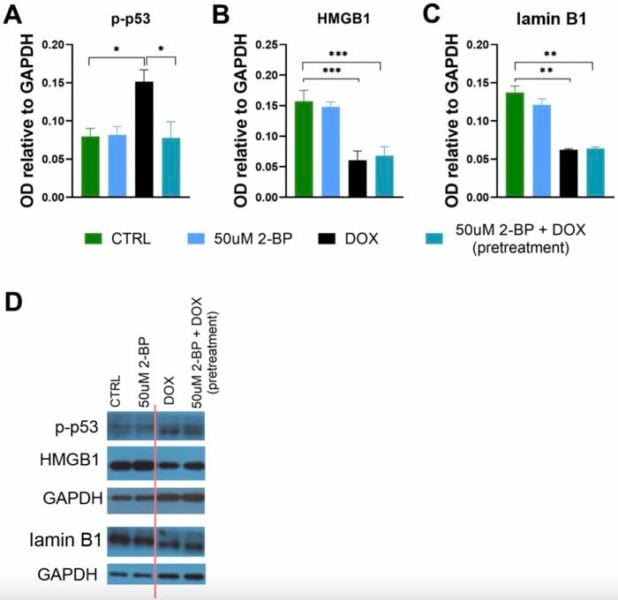Summary: Scientists have discovered that inhibiting protein palmitoylation can partially reverse cellular senescence in human vascular smooth muscle cells, opening new avenues for understanding and potentially treating age-related diseases.
Estimated reading time: 6 minutes
In a significant step forward for aging research, scientists have uncovered a potential method to reverse certain aspects of cellular aging. The study, published in the journal Aging, reveals that a specific protein modification process called palmitoylation plays a crucial role in maintaining the senescent state of cells.
Senescence is a cellular state associated with aging and various age-related diseases. When cells become senescent, they stop dividing and undergo changes in their function and appearance. This process is typically triggered by DNA damage and involves complex molecular pathways.
Why it matters
Understanding the mechanisms behind cellular senescence is crucial for developing therapies to combat age-related diseases. This research provides a new target for potential interventions that could slow down or even reverse aspects of cellular aging.
Unlocking the senescence puzzle
Researchers from the Nencki Institute of Experimental Biology in Warsaw, Poland, focused their attention on a chemical compound called 2-bromopalmitate (2-BP). This substance inhibits protein acyltransferases, enzymes responsible for attaching fatty acid molecules to proteins in a process known as palmitoylation.
“We hypothesized that protein palmitoylation played a role in regulation of the senescent phenotype,” said Dr. Grazyna Mosieniak, one of the study’s corresponding authors.
The team’s experiments on human vascular smooth muscle cells (VSMCs) yielded intriguing results. When senescent cells were treated with 2-BP, they showed signs of rejuvenation:
- Resumed cell division
- Decreased markers of DNA damage
- Reduced activity of senescence-associated β-galactosidase, a common indicator of cellular senescence
A dose-dependent effect
The impact of 2-BP treatment on senescent cells was not all-or-nothing. Instead, the researchers observed that the effects were dose-dependent, meaning higher concentrations of 2-BP led to more pronounced changes in the cells’ senescent characteristics.
Dr. Adam Krzystyniak, another corresponding author, explained, “Our data suggest that cell senescence may be regulated by palmitoylation, which provides a new perspective on the role of this posttranslational modification in age-related diseases.”
Molecular pathways and implications
The study delved deeper into the molecular mechanisms behind these observed changes. The researchers found that 2-BP treatment was associated with a decrease in phosphorylated p53, a key protein involved in the DNA damage response and senescence induction.
This finding suggests that palmitoylation may play a role in regulating important signaling pathways involved in cellular senescence. By inhibiting this process, it may be possible to modulate these pathways and potentially reverse some aspects of cellular aging.
Challenges and future directions
While these results are promising, it’s important to note that cellular senescence is a complex process with both beneficial and detrimental effects in the body. Senescent cells play a role in wound healing and tumor suppression, so completely eliminating them could have unintended consequences.
Dr. Ewa Sikora, a co-author of the study, cautioned, “Our findings open up new avenues for research, but we need to carefully consider the broader implications of manipulating cellular senescence. Future studies will need to explore the long-term effects and potential applications of this approach.”
The research team is now planning follow-up studies to:
- Investigate the effects of 2-BP treatment on other cell types
- Identify specific proteins whose palmitoylation is critical for maintaining the senescent state
- Explore potential therapeutic applications for age-related diseases
As research in this field progresses, it may lead to new strategies for promoting healthy aging and combating age-related disorders. However, much work remains to be done before these findings can be translated into clinical applications.
Quiz:
- What protein modification process was found to play a role in cellular senescence?
- Which compound did the researchers use to inhibit this protein modification?
- Name one of the observed effects of treating senescent cells with this compound.
Answer Key:
- Palmitoylation
- 2-bromopalmitate (2-BP)
- Any one of: resumed cell division, decreased markers of DNA damage, or reduced activity of senescence-associated β-galactosidase


